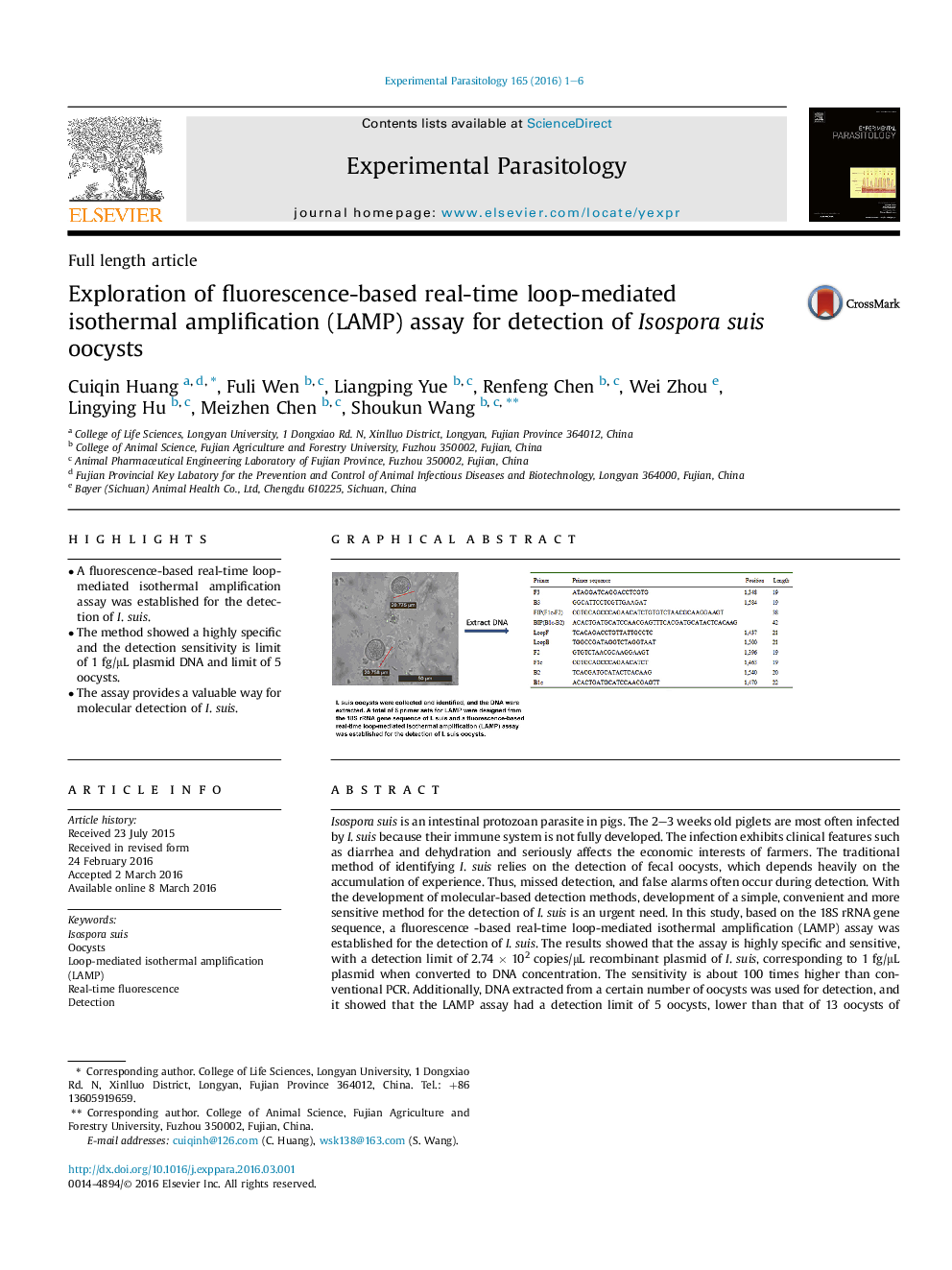| Article ID | Journal | Published Year | Pages | File Type |
|---|---|---|---|---|
| 4370947 | Experimental Parasitology | 2016 | 6 Pages |
•A fluorescence-based real-time loop-mediated isothermal amplification assay was established for the detection of I. suis.•The method showed a highly specific and the detection sensitivity is limit of 1 fg/μL plasmid DNA and limit of 5 oocysts.•The assay provides a valuable way for molecular detection of I. suis.
Isospora suis is an intestinal protozoan parasite in pigs. The 2–3 weeks old piglets are most often infected by I. suis because their immune system is not fully developed. The infection exhibits clinical features such as diarrhea and dehydration and seriously affects the economic interests of farmers. The traditional method of identifying I. suis relies on the detection of fecal oocysts, which depends heavily on the accumulation of experience. Thus, missed detection, and false alarms often occur during detection. With the development of molecular-based detection methods, development of a simple, convenient and more sensitive method for the detection of I. suis is an urgent need. In this study, based on the 18S rRNA gene sequence, a fluorescence -based real-time loop-mediated isothermal amplification (LAMP) assay was established for the detection of I. suis. The results showed that the assay is highly specific and sensitive, with a detection limit of 2.74 × 102 copies/μL recombinant plasmid of I. suis, corresponding to 1 fg/μL plasmid when converted to DNA concentration. The sensitivity is about 100 times higher than conventional PCR. Additionally, DNA extracted from a certain number of oocysts was used for detection, and it showed that the LAMP assay had a detection limit of 5 oocysts, lower than that of 13 oocysts of conventional PCR. The established LAMP assay overcomes the shortage of the traditional microscopy-based method, and provides a valuable way for molecular detection of I. suis.
Graphical abstractFigure optionsDownload full-size imageDownload as PowerPoint slide
